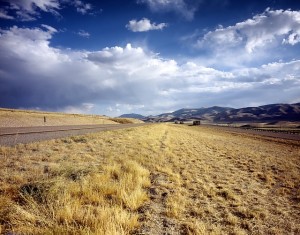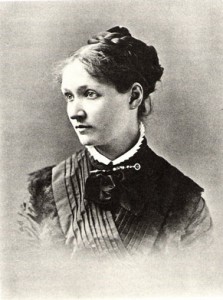A guest blog post by Mark Cwik
 I’ve been reading quite a bit in the last few months about the frontier and the American West, and I’m struck by how deep, pervasive and suggestive the idea of the West is for us in North America. It is almost impossible to call up the words “frontier” or “the West” without conjuring a rich set of culturally shared associations.
I’ve been reading quite a bit in the last few months about the frontier and the American West, and I’m struck by how deep, pervasive and suggestive the idea of the West is for us in North America. It is almost impossible to call up the words “frontier” or “the West” without conjuring a rich set of culturally shared associations.
As early as the 1780s, Hector St. John de Crèvecœur, in his essay “What is an American?” spoke of the frontier in terms that are familiar to us, as a place of near-lawlessness and near-barbarity, of primitive conditions and elemental drives. The western frontier Crèvecœur was talking about at that time lay barely west of the Appalachians, and the cowboy had yet to be invented.
 A century later, the American historian Frederick Jackson Turner declared that the era of the western frontier had already come to a close. In his influential essay “The Significance of the Frontier in American History” he codified an image of Western settlers imbued with a “restless, nervous energy” imbued with what he calls a “dominant individualism . . . and that buoyancy and exuberance that comes with freedom.” Their “coarseness and strength combined with acuteness and inquisitiveness,” Turner says, have stamped themselves on the American character and its democratic institutions. It’s not hard for us to hear these words and fill them out with a set of ideas and images of frontier and Western life that we’ve assimilated from stories, songs and, especially, television and films.
A century later, the American historian Frederick Jackson Turner declared that the era of the western frontier had already come to a close. In his influential essay “The Significance of the Frontier in American History” he codified an image of Western settlers imbued with a “restless, nervous energy” imbued with what he calls a “dominant individualism . . . and that buoyancy and exuberance that comes with freedom.” Their “coarseness and strength combined with acuteness and inquisitiveness,” Turner says, have stamped themselves on the American character and its democratic institutions. It’s not hard for us to hear these words and fill them out with a set of ideas and images of frontier and Western life that we’ve assimilated from stories, songs and, especially, television and films.
The evocative nature of such images of lone cowboys, grand vistas and frontier settlements speaks to the deep-seated power of our culture’s myths of the West. It’s the power of those mythic associations that Cormac McCarthy taps into with tremendous effect in his ultra-violent Blood Meridian, a novel that rings with the same biblical-cosmic ambitions of Herman Melville’s Moby Dick.
Wallace Stegner is clearly aware of the reach and tenacity of the frontier and Western myths in his masterwork Angle of Repose, which is the subject of the seminar I’ll be leading at Toronto Pursuits in July 2016. Stegner’s protagonist-narrator, Lyman Ward, is a retired history teacher in the late 1960s researching the story of his grandfather and grandmother, a mining engineer and a novelist-illustrator who lived throughout the Old West of the late 19th century. Lyman is vocal in emphasizing that he is not interested in writing a history of the West. He knows what that kind of history looks like—in his mind, history books are littered with a lot of “dubious assumptions” of what the West was really like.

Lyman tells us that his real drive is to understand his grandparents’ marriage—“how two such unlike particles clung together, and under what strains, rolling downhill into their future until they reached the angle of repose where I knew them.” That quest to understand, cast against the failure of his own marriage, the social turmoil of the 1960s and his own declining health, makes up the narrative backbone of the novel. In some of the most affecting passages of the book, Lyman draws on his grandmother’s personal letters and other writings to imagine the life she led in the series of frontier mining towns to which her husband’s work took them. (The letters are all the more moving in that they are drawn from the real-life correspondence of Arthur and Mary Hallock Foote.)
It is one of the many pleasures of Angle of Repose that—Lyman’s protests notwithstanding—Stegner does tell us his own history of the West. But it is through the personal, the specific and the intimate that he chooses to build that history, rather than through the mythic. It might be better to say that Stegner ultimately paints a portrait of the West through the details his characters’ lives and interactions. The richness and subtleties of that portrait will be some of the subjects of our seminar discussions. I hope you will join us to explore this beautiful book.
You can click on the link to learn more about my seminar, Finding Balance: Wallace Stegner’s Angle of Repose. I’ll look forward to meeting you at Toronto Pursuits 2016!
– Mark

Latest Updates
Seminars on literature from the ancient world to today
See the world through the eyes of visionary writers and artists
An annual gathering of lifelong learners
A 2022 participant